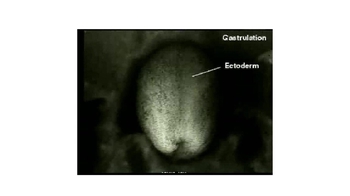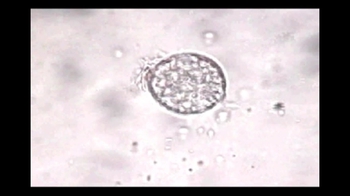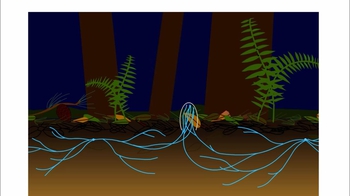Table of contents
- 1. Introduction to Biology2h 42m
- 2. Chemistry3h 40m
- 3. Water1h 26m
- 4. Biomolecules2h 23m
- 5. Cell Components2h 26m
- 6. The Membrane2h 31m
- 7. Energy and Metabolism2h 0m
- 8. Respiration2h 40m
- 9. Photosynthesis2h 49m
- 10. Cell Signaling59m
- 11. Cell Division2h 47m
- 12. Meiosis2h 0m
- 13. Mendelian Genetics4h 44m
- Introduction to Mendel's Experiments7m
- Genotype vs. Phenotype17m
- Punnett Squares13m
- Mendel's Experiments26m
- Mendel's Laws18m
- Monohybrid Crosses19m
- Test Crosses14m
- Dihybrid Crosses20m
- Punnett Square Probability26m
- Incomplete Dominance vs. Codominance20m
- Epistasis7m
- Non-Mendelian Genetics12m
- Pedigrees6m
- Autosomal Inheritance21m
- Sex-Linked Inheritance43m
- X-Inactivation9m
- 14. DNA Synthesis2h 27m
- 15. Gene Expression3h 20m
- 16. Regulation of Expression3h 31m
- Introduction to Regulation of Gene Expression13m
- Prokaryotic Gene Regulation via Operons27m
- The Lac Operon21m
- Glucose's Impact on Lac Operon25m
- The Trp Operon20m
- Review of the Lac Operon & Trp Operon11m
- Introduction to Eukaryotic Gene Regulation9m
- Eukaryotic Chromatin Modifications16m
- Eukaryotic Transcriptional Control22m
- Eukaryotic Post-Transcriptional Regulation28m
- Eukaryotic Post-Translational Regulation13m
- 17. Viruses37m
- 18. Biotechnology2h 58m
- 19. Genomics17m
- 20. Development1h 5m
- 21. Evolution3h 1m
- 22. Evolution of Populations3h 52m
- 23. Speciation1h 37m
- 24. History of Life on Earth2h 6m
- 25. Phylogeny2h 31m
- 26. Prokaryotes4h 59m
- 27. Protists1h 12m
- 28. Plants1h 22m
- 29. Fungi36m
- 30. Overview of Animals34m
- 31. Invertebrates1h 2m
- 32. Vertebrates50m
- 33. Plant Anatomy1h 3m
- 34. Vascular Plant Transport1h 2m
- 35. Soil37m
- 36. Plant Reproduction47m
- 37. Plant Sensation and Response1h 9m
- 38. Animal Form and Function1h 19m
- 39. Digestive System1h 10m
- 40. Circulatory System1h 57m
- 41. Immune System1h 12m
- 42. Osmoregulation and Excretion50m
- 43. Endocrine System1h 4m
- 44. Animal Reproduction1h 2m
- 45. Nervous System1h 55m
- 46. Sensory Systems46m
- 47. Muscle Systems23m
- 48. Ecology3h 11m
- Introduction to Ecology20m
- Biogeography14m
- Earth's Climate Patterns50m
- Introduction to Terrestrial Biomes10m
- Terrestrial Biomes: Near Equator13m
- Terrestrial Biomes: Temperate Regions10m
- Terrestrial Biomes: Northern Regions15m
- Introduction to Aquatic Biomes27m
- Freshwater Aquatic Biomes14m
- Marine Aquatic Biomes13m
- 49. Animal Behavior28m
- 50. Population Ecology3h 41m
- Introduction to Population Ecology28m
- Population Sampling Methods23m
- Life History12m
- Population Demography17m
- Factors Limiting Population Growth14m
- Introduction to Population Growth Models22m
- Linear Population Growth6m
- Exponential Population Growth29m
- Logistic Population Growth32m
- r/K Selection10m
- The Human Population22m
- 51. Community Ecology2h 46m
- Introduction to Community Ecology2m
- Introduction to Community Interactions9m
- Community Interactions: Competition (-/-)38m
- Community Interactions: Exploitation (+/-)23m
- Community Interactions: Mutualism (+/+) & Commensalism (+/0)9m
- Community Structure35m
- Community Dynamics26m
- Geographic Impact on Communities21m
- 52. Ecosystems2h 36m
- 53. Conservation Biology24m
29. Fungi
Fungi Reproduction
Problem 13`
Textbook Question
Some fungi have elaborate mechanisms for dispersing spores. For example, the “squirt gun” fungus Pilobolus, which grows in cow dung, forcibly shoots off tiny black sporangia filled with spores. Any sporangia that are flung onto fresh grass are likely to be eaten by a grazing cow, passed through its digestive system unharmed, and deposited in a new batch of dung. The spores carried within the sporangia are perfectly positioned to grow into a new mycelium.
Would you describe the association between Pilobolus and cows as a symbiotic relationship? Explain your answer.
 Verified step by step guidance
Verified step by step guidance1
Begin by defining what a symbiotic relationship is. In biology, symbiosis refers to a close and long-term biological interaction between two different biological organisms. This can be mutualistic, commensalistic, or parasitic.
Identify the organisms involved in the association. In this case, the organisms are Pilobolus, a type of fungus, and cows.
Examine the nature of the interaction between Pilobolus and cows. Pilobolus grows on cow dung, which provides a nutrient-rich environment for the fungus to thrive. The fungus benefits from the cow dung as a substrate for growth.
Consider whether the cows benefit, are harmed, or are unaffected by the presence of Pilobolus. Typically, cows are not directly affected by the fungus growing on their dung, indicating a commensal relationship where Pilobolus benefits without affecting the cows.
Conclude whether the relationship fits the definition of symbiosis. Since Pilobolus benefits from the cow dung without affecting the cows, this can be described as a commensal symbiotic relationship.
 Verified video answer for a similar problem:
Verified video answer for a similar problem:This video solution was recommended by our tutors as helpful for the problem above
Video duration:
1mPlay a video:
Was this helpful?
Key Concepts
Here are the essential concepts you must grasp in order to answer the question correctly.
Symbiotic Relationships
Symbiotic relationships are interactions between two different organisms living in close physical proximity, often to the benefit of one or both parties. These relationships can be mutualistic, commensalistic, or parasitic, depending on whether both, one, or neither organism benefits. Understanding these categories is crucial to determining the nature of the interaction between Pilobolus and cows.
Recommended video:
Guided course

Symbiosis
Pilobolus Fungus
Pilobolus is a genus of fungi known for its unique spore dispersal mechanism. It grows on herbivore dung, such as that of cows, and uses a specialized structure to launch its spores towards vegetation, which are then ingested by herbivores, completing its life cycle. This relationship with cows is essential for its reproduction and dispersal.
Recommended video:
Guided course

Fungi - 1
Commensalism
Commensalism is a type of symbiotic relationship where one organism benefits while the other is neither helped nor harmed. In the context of Pilobolus and cows, Pilobolus benefits from the cow's dung as a growth medium, while the cow is largely unaffected by the presence of the fungus, illustrating a commensal relationship.
Recommended video:
Guided course

Positive Interactions

 9:27m
9:27mWatch next
Master Fungi Reproduction - 1 with a bite sized video explanation from Jason
Start learningRelated Videos
Related Practice




















